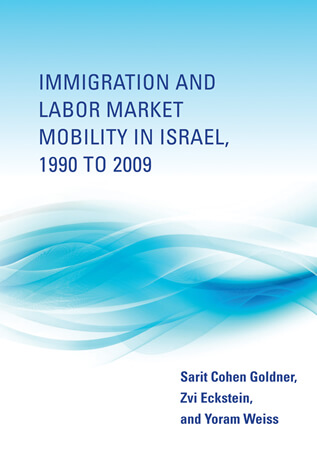|
ZVI ECKSTEIN |
|||||||||||||||||||||
|
|||||||||||||||||||||
|
RESEARCH AND PUBLICATIONS - BOOKS IMMIGRATION AND LABOR MARKET MOBILITY IN
ISRAEL, 1990 TO 2009 SARIT COHEN GOLDNER, ZVI ECKSTEIN and
YORAM WEISS
The MIT Press, September 2012 Also available at Amazon After the collapse of the Soviet Union in 1989, Soviet Jews emigrated in large numbers to Israel. Over the next ten
years, Israel absorbed approximately 900,000 immigrants from the former
Soviet Union, an influx that equaled about twenty percent of the Israeli
population. Most of these new immigrants of working age were college-educated
and highly skilled. Once in Israel, they were eligible for a generous package
of benefits, including housing subsidies, Hebrew language training, and
vocational education. This episode provides a natural experiment for testing
the consequences of a large immigration inflow of skilled workers. This book
provides a detailed analysis of the gradual process of occupational upgrading
of immigrants and the associated rise in their wages. Based on their analysis, the authors conclude that even a very large
and unanticipated wave of immigration can be integrated within the local
labor market without any significant long-term adverse economic effect on
natives. The small effect on wages and employment of natives is explained by
the capital inflows into Israel and the gradual entry of immigrants into
high-skill jobs as they invest in local human capital. An important
contribution of the book to the immigration literature is the formulation and
estimation of stochastic dynamic models that combine job search with
investment in human capital and the analysis of alternative government
policies within this framework. Tables and Figures We present a complete set of the tables and figures included in the book, along with the code used to construct them (where available). Note that the Excel files include hidden worksheets containing the data and calculations.
Description
of Data Files
. Related Papers
Other Papers
Presentations
|
|||||||||||||||||||||


